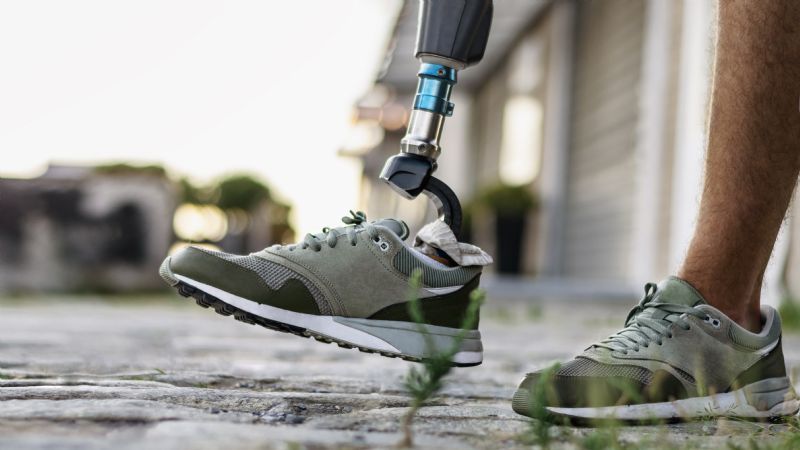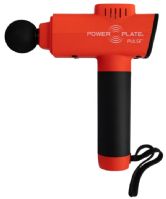 Written by Susan Griffitts, MSN, RN, FCN
Written by Susan Griffitts, MSN, RN, FCN
Lower limb amputation can be very traumatic, with amputees experiencing depression and grief for their former lifestyle. It’s important to remember that if you or a loved one has lost a limb, it doesn’t change who you are or prevent you from enjoying life. There are almost 2 million people living with limb loss in the US. Those further along on the recovery path want you to know that things will get better and easier with time. Eventually, you willl be able to adapt and participate in all of the things you loved to do before the amputation.
Whether you’ve lost a limb due to vascular disease, trauma, or cancer, there are a variety of useful items for lower limb amputees that can make activities of daily living much easier and safer. Read on to learn more about how to help yourself or a loved one adapt to lower limb loss and still live life to the fullest!

Recent amputees need positive encouragement. Talking with friends, family, and health professionals about frustrations and fears is an important part of the recovery process. Staying active and wanting to return to how life was before amputation certainly presents challenges. But identifying and removing these barriers to mobility and independence while simultaneously enhancing functionality and safety enables people living with lower limb amputation to reach their full potential. An occupational therapist (OT) can help determine what kinds of home modifications and assistive devices will best fit your unique requirements.
 | Tile Grip Portable Suction Grab Bar View Product |
One of the easiest and most affordable ways to make bathing and showering safer for lower limb amputees is to install suction shower handles. Also known as suction-cup grab bars, these versatile handles come with durable suction cups that adhere to any smooth, pore-tight surface, negating the need for drilling holes. They usually come with a vacuum toggle lever to release their attachment so you can take them with you for portable shower support wherever you roam. Optimizing safety on wet shower floors, suction shower handles provide dependable, durable support for standing and transfer.
Best: Tile Grip Portable Suction Grab Bar
 | Etac Clean Fixed-Height Shower Commode Chair View Product |
Another way to prevent falls and other injuries in the bathroom is to utilize shower benches or shower chairs. When configured as a stationary chair, bench, or stool, this supportive equipment gives amputees a comfortable, secure place to sit while bathing. When configured as a rolling chair or wheelchair, amputees can remain seated in the chair to and from the shower, optimizing safety with fewer transfers. Made with durable, non-corrosive, and waterproof materials, shower benches and shower chairs are easy to keep clean and maintain for years of dependable support. Many styles offer convenient adjustability so you can customize their fit to the individual user.
Best: Etac Clean Fixed-Height Shower Commode Chair
 | iWALK 3.0 Hands-Free Crutch View Product |
Many below knee amputees recommend using a hands-free crutch once healing is complete. This innovative device is incredibly fast and easy to attach, providing solid, strong, and hands-free mobility support. More convenient than conventional crutches and safer on stairs, hands-free crutches provide a comparable alternative to using a prosthetic. It places pressure on different areas of the leg than a prosthetic, so it’s often utilized when below knee amputees tire of using their prosthetic.
Best: iWALK 3.0 Hands-Free Crutch
 | Swing-Away Amp Wheelchair Extremity Support for Amputees by Comfort Company View Product |
Specially designed for lower limb amputees, wheelchair limb support cushions address the unique positioning and postural needs of wheelchair users following amputation. Adding extra support and optimizing comfort, this specialized padding is available in different sizes and it’s usually compatible with most standard wheelchairs. Sometimes designed as a kit that allows multiple positioning angles, wheelchair limb support cushions are the ideal solution for comfortable residual limb support.
Best: Swing-Away Amp Wheelchair Extremity Support for Amputees
dvvdv.jpg&newwidth=365&maxheight=200) | Molift Easy Amputee 4-Point RgoSling View Product |
Specifically configured to more comfortably accommodate the particular needs of lower limb amputees living with either single or bilateral amputation, amputee patient transfer slings are used in conjunction with patient lifting equipment. Helping to transfer users to and from the bed, wheelchair, commode, and more, these slings have longer leg sections to improve support under both legs. The leg sections also come with loops to prevent pull-away, while buckles on the belt ensure even distribution. In addition, amputee patient transfer slings have a smaller commode opening to prevent the user from slipping down.
Best: Molift Easy Amputee 4-Point RgoSling
 | Power Plate Pulse Percussion Massager View Product |
A handheld massage gun provides healing therapy and desensitization in a compact, one-button style that’s easy to self-administer. Providing percussive massage that goes deeper than regular massage devices, the massage guns help to minimize nerve pain, loosen tight muscles, and alleviate pain. Amputees often use this therapy to better prep their legs to optimize the prosthetic application. Promoting healthy circulation and lymph drainage, a handheld massage gun helps to release toxins and lactic acid trapped inside deep tissue.
Best: Power Plate Pulse Percussion Massager
 | Freedom Staff Driving Hand Control - Grab Bar View Product |
Perfect for lower limb amputees and anyone else living with mobility impairments that affect their legs, driving aids that enable hands-only control helps users to regain independence and safety. From golf carts to delivery vans, all kinds of vehicles can be modified to meet the specific needs of lower limb amputees. Hand controls operate the acceleration and brake pedals on vehicles with automatic transmissions, making it easy for lower limb amputees to drive independently and get back on the road!
Best: Freedom Staff Driving Hand Control - Grab Bar
While losing a limb will alter your life in a variety of ways, choosing the right daily living aids can make your recovery journey much easier and more comfortable. Many activities of daily living may seem impossible following amputation. However, using the appropriate assistive devices will help you optimize your health, keep you connected, and support you in living your life to the fullest.
We hope you enjoyed learning about useful items for lower limb amputees, and we invite you to read more helpful and educational articles about tools for the job of living on our Caregiver University blog.

After battling (and winning) cancer, Susan changed careers from being a paralegal to nursing. This decision was a direct result of the care received during her battle and all of her healthcare providers taking an interest in her as a person and not just a diagnosis. Thanks to those amazing experiences, this is the way Susan approaches nursing and caring for her patients. She is passionate about caring for all individuals but her primary focus is providing relief from the symptoms & stress of serious illnesses, the process of aging, and the particular problems of seniors.
Susan lost her right leg above the knee, to cancer, in 2013. Since that time, she has been very active in the amputee community helping to bring awareness and independence to other amputees. Read how Susan helped shape the future of new prosthetic devices.